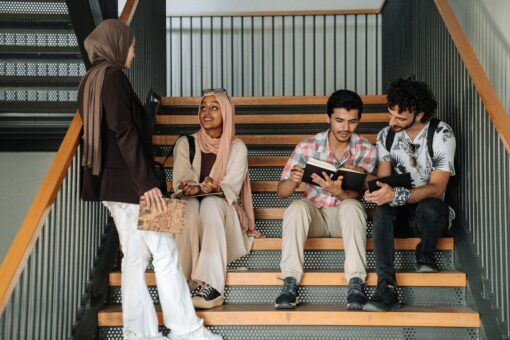
Are you developing a Theory of Change for an attainment-raising activity? If so, we’re here to help. We have six Theories of Change for attainment-raising initiatives that include comprehensive diagrams and a thorough narrative.
At first look these might seem daunting but, “Don’t Panic”, we’ve got some guidance on how to use them for your own attainment-raising activities.
Why we have produced them
Academic achievement is the most important predictor of HE progression (Crawford, 2014) but there are persistent equality gaps in GCSE attainment. As a result, the Office for Students’ (OfS) called for HE providers (HEPs) to do more to raise the academic attainment of school students. However, TASO’s evidence review and typology of attainment-raising interventions found that few attainment-raising interventions currently set out how they are expected to cause improvements in attainment.
To help the sector, we appointed Ipsos UK to develop Theories of Change for pre-16 attainment-raising initiatives for six HEPs covering activities identified in the TASO review:
- Aspiration-raising and study/soft skills – Aston University
- Teaching of the national curriculum through tutoring – King’s College London
- Collaborative design of new curricula – University of Chester
- School governance – The London School of Economics and Political Science
- Literacy confidence and skills – University of Kent
- Aspiration-raising and study/soft skills – University of Greenwich
What’s inside
The first thing to notice is that these are much more comprehensive than our core Theory of Change templates. The diagrams have linkages between the different components (inputs, activities, outcomes and impact) and a wide-ranging narrative covering pathways from activities to outcomes, the assumptions and risks, and how and when you might collect data to evaluate the activities. Perhaps the most important part of these Theories of Change is that the hypothesised causal pathways – the way in which the activities are intended to achieve their expected outcomes – are clearly described.
The diagrams and narratives were iterated by Ipsos staff from stakeholder documentation and consultations to form a core Theory of Change. The comprehensive Theories of Change are the results of a workshop run by Ipsos staff with key stakeholders where the hypothesised causal pathways (the linkages between inputs, activities and outcomes) were identified. From this, Ipsos developed the comprehensive diagram and narrative available here.
We’re not saying that you should abandon the core Theory of Change; our director of research, Eliza Kozman, defends their simplicity on the grounds that they provide a clear overview for non-specialist audiences on how we expect an activity to lead to impact.
Nevertheless, we’re hoping that these documents will complement the existing offering while providing the sector with examples of more comprehensive models, advocated for by Julian Crockford, that clearly highlight where evaluation takes place so we can understand how the activities work. These attainment-raising Theories of Change are similar to a new, enhanced Theory of Change template that we will be unveiling soon.
Ways to use them
The second piece of guidance — after “Don’t Panic” — is that you should feel free to treat these Theories of Change like a buffet where you can sample a little bit of everything, or choose to focus on one particular dish.
Starting a programme from scratch? Identify an attainment-raising activity from the suite available which your organisation can adapt/deliver and clone the Theory of Change. But make it your own! Adjust for local conditions (e.g., availability of staff) and carefully consider the assumptions and risks – do they apply or can you mitigate them?
Use them as a guide to identifying potential causal pathways in your own Theory of Change. What happens between an activity and an outcome and what are the mechanisms that lead to this change. For example, the first hypothesised causal pathway of the GREat Skills Programme from skills workshops to improved attainment and likelihood to progress to HE is broken down into two intermediate stages of the immediate impact of the skills workshop (Improved academic skills, etc.) and a more long-term outcome (improved academic performance, motivation, and confidence).
Looking for an evaluation plan? Find the causal pathways in your own Theory of Change, find a similar one in this bank of examples and look at the evaluation plan. Identify intermediate outcomes and ways of measuring them.
Checking your own Theories of Change. Look at the assumptions and risks identified in these Theories of Change and see if they apply to your own. For example: consider the training of staff involved in delivery; is it effective? Or, is there buy-in from the schools you’re working with and are you expecting too much from them in terms of resourcing and funding?
And finally…
Like Rome, these comprehensive Theories of Change were not built in a day. Instead, they can be constructed over time from a core Theory of Change – perhaps by identifying and extracting into a new document a causal pathway between activities and outcomes, and then adding the linkages. You will then have the beginnings of a comprehensive Theory of Change that can be amended with evaluation plans, assumptions and risks, and additional causal pathways to ultimately encompass all aspects of your initiative. This will help you to determine if the pathways you’ve identified are causal (or not).